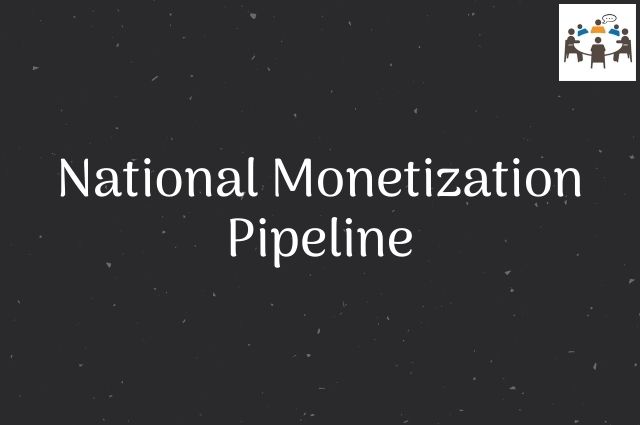Theme:
- In August 2021, the ‘National Monetization Pipeline‘ (NMP) was launched.
What is National Monetization Pipeline:
- Under NMP, some of the government’s infrastructure assets including airports, highways, coalmines will be leased to private players over the next four years between FY22 and FY25.
- The assets that are to be leased are brownfield projects, which means investment is already made, but they are underutilized and not fully monetized.
- As a first step, the government is planning to lease 2,229 km of GAIL’s gas pipelines.
Pros of National Monetization Pipeline:
- The government is expecting to fetch around 6 lakh crore rupees through NMP. It was mentioned by the government that this money will be used for building new infrastructures under the ‘National Infrastructure Pipeline’ (NIP).
- Investments on core assets that are to be leased can be recovered quickly. For example, when the government leases a highway for 30 years, it transfers the operational responsibilities as well the right to collect toll. And the private entity will give the lumpsum amount upfront. So, in this way, the government will recover the investment quickly without taking the returns over a few years.
- With the new infrastructure projects, plenty of jobs will be created.
- Monetization is not the same as privatization. In the end, the assets should be returned to the government after a certain period. And the government is the custodian of these assets.
- NMP reduces the burden on the government. It is very difficult for the government to operate all these core assets while working on building new infrastructures and also maintaining day-to-day businesses. So, NMP can take some burden off from the government.
- The government is now monetizing the assets that are not giving enough returns. Private players will surely work hard to make the assets profitable because, in the end, they have to get profit.
Criticism on National Monetization Pipeline:
- At present, the core assets that are to be leased are not giving enough returns because there are some systemic hurdles. Without fixing those issues, even if we involve private players, we cannot expect improvement in the situation.
- This may become a monopoly of a few corporate companies. Moreover, this is vulnerable to political influence. Companies that are close to the political leaders in power may get these projects if the auction process is not transparent.
- There is no guarantee that private players will make the assets profitable. This can be evident in the bankrupt cases of many private companies.
- Several job losses may happen because private companies believe in more efficiency and less human resources.
- There is a risk of over-exploitation of assets by private players.
- The government’s core infrastructure assets are also taking care of public welfare. If private players raise the prices, the public has to pay more. Unless there is a price regulation from the government, this will become a burden on the public.
- Earlier, when the government tried to privatize some assets including Air India, BPCL, not many corporate companies showed interest. So, those privatization attempts were a failure. There are chances that the NMP may also face the same fate.
- There is a criticism from the opposition that the money raised may be used to fill the fiscal deficit, instead of using them on infrastructure projects as mentioned.
- By leasing the assets to private players, cash will be taken upfront and returns will be halted for the next 30 to 40 years. So, how can future government handle expenditure without these revenues is a big question.
- As the government took this decision unilaterally if the future government cancels the leases, the entire process will become a waste of money.
Conclusion:
National Monetization Pipeline can help in monetizing underutilized core assets. This money can be used for National Infrastructure Pipeline, and thus can improve the country’s infrastructure and can create plenty of jobs as well. But execution should be transparent and must be free of political influence. And also care must be taken to avoid the negative effect on consumers.
Your Turn…
What are your thoughts on National Monetization Pipeline? Express your point of view through the comment section. And subscribe to our blog to read answers to the trending GD topics.
References:
- Why is there a push for asset monetisation?
- GAIL’s pipelines first on block under National Monetization Pipeline
- National monetisation pipeline betrays narrow outlook
- Don’t let asset monetization end up as a potemkin show
- Modi’s Asset Monetisation Bonanza Must Avoid the Ownership Concentration Trap
- Chidambaram Points Out Flaws in Asset Monetisation Plan, Warns of Price Rise, Monopolies
Copyright @ Group Discussion Ideas.

